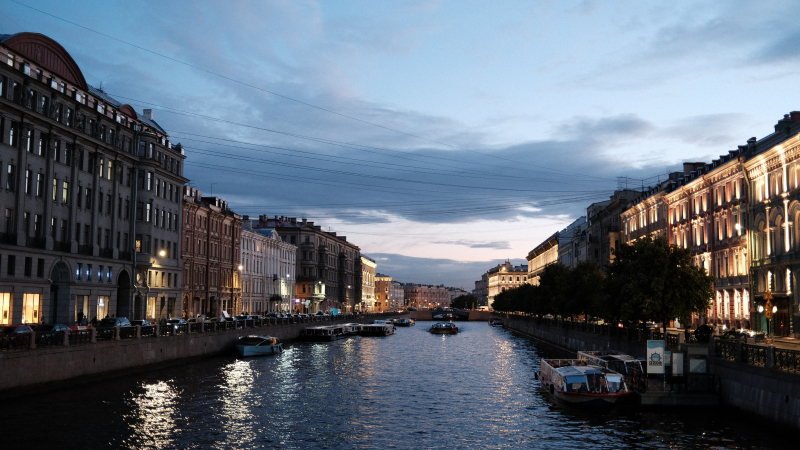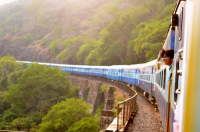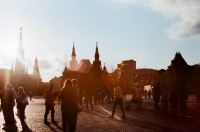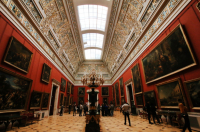St. Petersburg in five words
Romantic, historical, royal, cultural, artistic… But also gloomy, rainy, windy, gray, and temperamental. Whereas Moscow is known as the bustling business capital, St. Petersburg has a much more elevated reputation, backed by its abundant palaces and castles on one side and its galleries, theaters, and museums on the other. Apart from all of the above, the city is typically famous for its Venice-inspired planning, its unpredictable weather, and the many creative minds who walked its streets over the centuries, from Pushkin and Dostoevsky to Repin and Tchaikovsky. As one popular postcard puts it, “You follow your work to Moscow, and you follow your heart to St. Petersburg.”
You will doubtlessly discover your own St. Petersburg over the time of your studies here, and what you’ll find below is a list of places not to miss as you start your exploration.
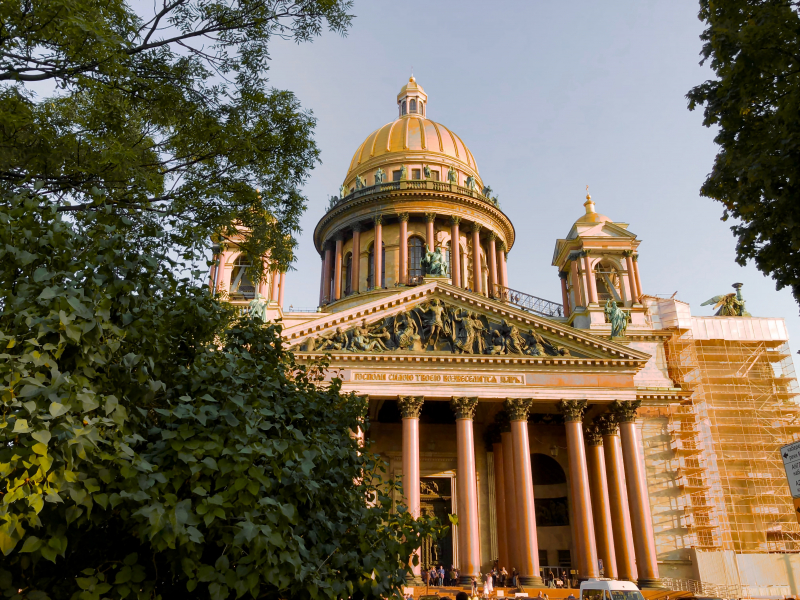
St. Isaac’s Cathedral. Credit: Alex Korolev (@velorokalex) on Unsplash
What to see
Must-sees in a day:
- Nevsky Prospekt (from Vosstaniya Square to Palace Square) – though not in the top-10 among the locals for always being so busy and crowded, Nevsky is undeniably a must-visit as the city’s beating heart. While you walk along the prospekt, don’t miss the Church of the Savior on Blood and the Kazan Cathedral, some of St. Pete’s most famous landmarks;
- Palace Square and the Hermitage – the city’s main square and the Winter Palace, now one of the world’s largest museums. If you’re planning to fit a visit to the Hermitage into a day packed with other experiences, consider checking out the museum’s collection ahead and planning which pieces you want to see;
- St. Isaac’s Cathedral and the Bronze Horseman – it’s worth the sweat of climbing the cathedral’s colonnade to get a bird’s eye view of the city center;
- The Spit of Vasilievsky Island, overlooking the Neva and the bridges – to get another overview of the city, this time appreciating its connection to Venice and Amsterdam;
- The Peter and Paul Fortress – to see the citadel that the city started with;
- Boat tour through the canals – this is your chance to see the city from water and experience the famous bridge opening.
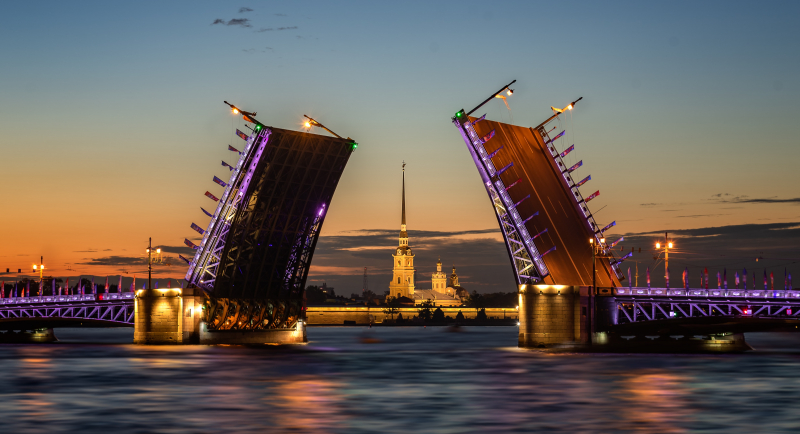
The opened Palace Bridge and Peter and Paul’s Fortress. Credit: Hu Chen (@huchenme) on Unsplash
For more experienced travellers, or those with more time to explore:
- The General Staff Building – located on Palace Square opposite the Winter Palace, this is another Hermitage building that houses more “contemporary” art, from impressionism to avant-garde and often hosts intriguing exhibitions;
- The Russian Museum – for a unique collection of pieces by Russian artists;
- Mariinsky, Aleksandrinsky, or Mikhailovsky theaters – though some might claim the Mariinsky has the best dancers, you will get an equally impressive ballet or opera experience at the Mikailovsky, too, while the Aleksandrinsky will offer some interesting takes on classic and contemporary plays;
- Explore the metro stations – follow our guide or just go out to random stations to see their beautiful interiors;
- Grand Maket Rossiya – for a detailed model of some of the country’s many regions with tiny moving cars and trains;
- Erarta museum and Manezh exhibition hall – check their respective websites to see what they have on, and then go get your contemporary art experience;
- St. Peter and St. Paul Church (Petrikirche) and St. Anne's Church (Annenkirche) – to see churches that are now popular event and exhibition locations but have changed many hats, from swimming pools to nightclubs, over their history. Learn more about both of them here.
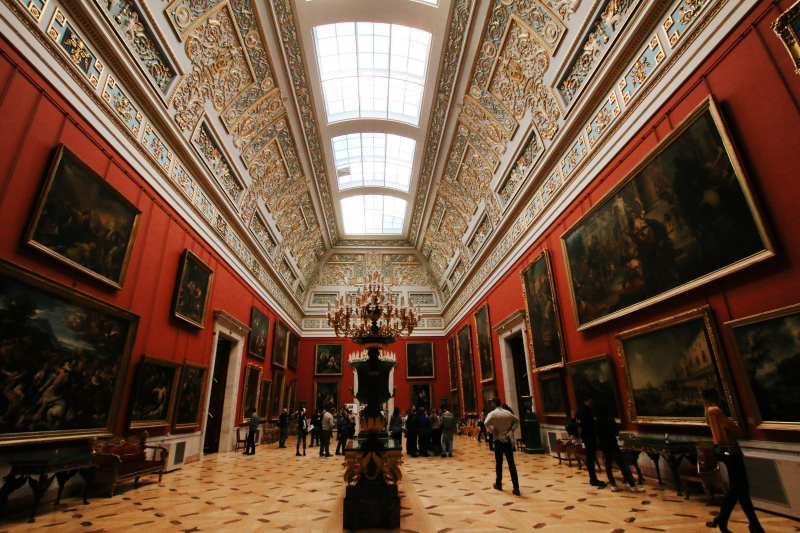
Inside the Hermitage. Credit: Artem Bryzgalov (@abrizgalov) on Unsplash
Parks and outdoor spaces:
- The Summer Garden – an oasis of relative peace (though not in the high season) right in the city center, originally designed by founder of the city Peter the Great himself;
- 300th Anniversary Park – here, you will get to walk along the beach on the Gulf of Finland without leaving the city, while also perusing the city’s most recent controversial edifice, the Lakhta Center;
- St. Petersburg Botanical Garden – to enjoy unique plants from all over the world, as well as explore the surrounding Petrogradsky District;
- Sevkabel Port and New Holland Island – these are the city’s most popular gentrified spaces that host a variety of events, from exhibitions and film screenings to markets of all sorts. Though they might not be truly characteristic of the city, there you can have a great time and explore local businesses.
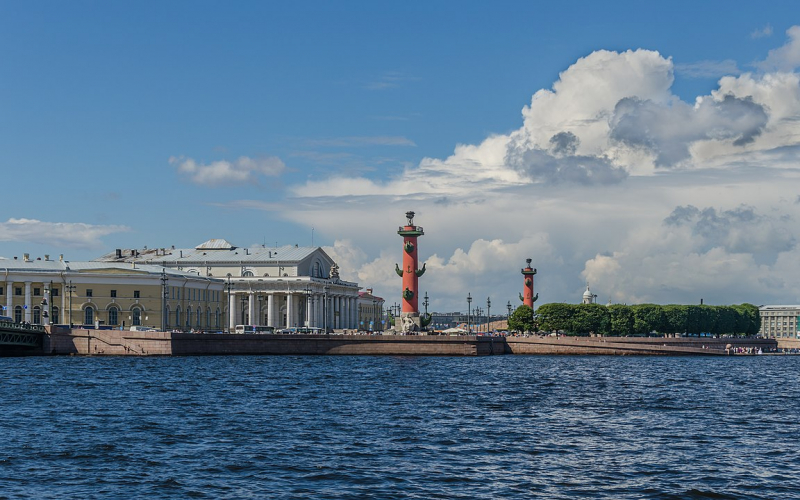
The Spit of Vasilievsky Island. Credit: Alex 'Florstein' Fedorov / Wikimedia Commons / CC BY-SA 4.0
Explore outside the city:
- Peterhof – to explore the famous fountains, as well as a beautiful park and an impressive palace;
- Pushkin – to see the legendary Amber Room and walk in the shoes of Pushkin down the halls of his lyceum;
- Vyborg – to discover a medieval town with some incredible architectural gems and traces of several different cultures.
For more destinations to explore in and around St. Petersburg, follow this tag with our best stories.
